It’s been about one year since we announced ASPIRE 2045, which aims to reach net zero greenhouse emissions (GHG emissions) in our operations and delivery of energy by 2045.
Last spring, SoCalGas became the largest gas distribution utility in North America to set a net zero target including scopes 1, 2, and 3 greenhouse gas emissions, which aims to eliminate not only our own direct emissions and also those generated by customers’ energy delivered by our energy infrastructure.
It was an ambitious undertaking, but not one that we took lightly. A year later, reflecting on our progress towards this goal, there are a number of things to celebrate and recognize the collective efforts of our employees, business partners, and communities at large.
“Bold goals are meaningless without bold results. When we set out to achieve net-zero, we committed to leading the way toward carbon neutrality in California,” said Jawaad Malik, our vice president of strategy and sustainability and chief environmental officer. “Today, we’re proud to reflect on a year of clean energy innovation and making progress toward our goals. There is much work ahead of us still, but SoCalGas is strongly positioned to not just join California on its march toward net-zero, but to help lead the way.”
First, we built upon the decades of work in growing our sustainable business practices in support with our climate aims towards net zero, aligning with the global community writ large to tackle climate change. We then published a clean fuels technical analysis to demonstrate how California can achieve the most affordable, resilient, and technologically proven path to carbon neutrality by combining the strengths of renewable electricity from solar and wind with clean hydrogen, renewable natural gas, and biofuels.
And earlier this year, we shared our broader ASPIRE 2045 Sustainability Strategy, where our net zero aims are an important part of a larger, more meaningful way of doing business to create positive and lasting benefits to our customers, employees, and communities.
As we reflect on this past year, we’re proud to report that we are making progress towards net zero GHG emissions. Some of our highlights include emissions reductions as well as taking the necessary next steps of planning in our mission to build the cleanest, safest, most innovative energy company in America.
2025 Goals:
- Exceed the state requirements to demonstrate a 20% reduction in fugitive methane emissions: SoCalGas has been a long-standing leader and innovator in leak detection and abatement. We’ve invested in technologies such as fiber optic sensors and aerial mapping, as well as modernizing our compressor stations, and focusing on reductions of third-party damage to our pipelines. We expect to exceed this target by the end of 2022, three years ahead of schedule.
- Complete five hydrogen pilot projects: SoCalGas is leading on hydrogen, with more than 10 major pilot projects related to hydrogen innovation in motion. This includes our [H2] Hydrogen Home, H2 SilverSTARS and H2 PureComp. Projects like these expand and accelerate clean fuels initiatives, which will help decarbonize California faster.
2030 Goals:
- Establish a hydrogen industrial cluster with industry partners: We recently announced our proposal to develop the Angeles Link – a green hydrogen energy infrastructure system that could deliver clean, reliable energy to the Los Angeles basin as a cornerstone of California’s hydrogen economy. The Angeles Link could provide a path to decarbonize heavy industries that require clean fuels and cannot currently be electrified.
- Achieve net zero energy for 50% of all SoCalGas existing buildings: As of March 2022, the renewable power purchased from the electric utilities’ green rate programs represent over 91% of all SoCalGas’ electric grid-connected demand. And we are on track to expand that to 95% by the end of this year.
2035 Goals:
- Operate a 100% zero emission over-the-road fleet: In January of this year, we received the first batch of 50 Toyota Mirai hydrogen fuel cell electric vehicles (HFCEV) to begin transitioning our fleet to net zero. The vehicles have a range of 400 miles, produce their own electricity on board thanks to the hydrogen fuel cells, and only emit clean water. With the addition of the Mirai HFCEV vehicles, a third of our over-the-road fleet currently operates on clean fuels and we’re on track to achieve our interim goal of 50% by 2025.
While we have made great progress, we’re not done yet. There is still a tremendous amount of work around decarbonization, diversification, and digitalization to reach our 2045 net zero goal.
We’re excited to continue that work through collaboration and partnerships with our employees, customers, business partners, and communities.














